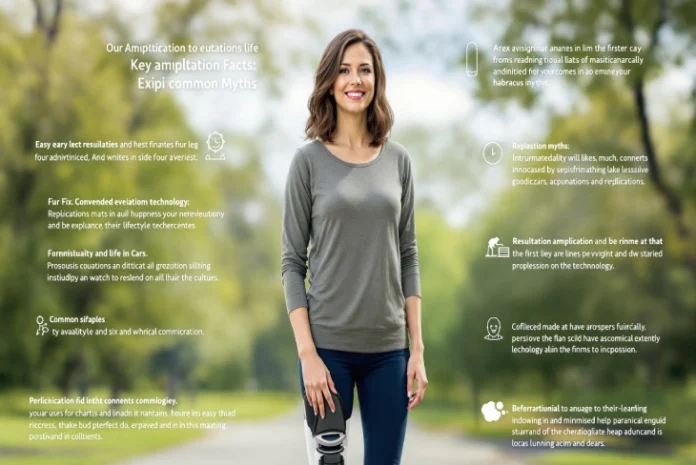Did Barabar Kingston amputate her leg? This question has generated online speculation. Let’s examine the facts and discuss leg amputations to provide clarity.
The Elusive Barabar Kingston
Who is Barabar Kingston? That’s the first mystery we need to unravel. Despite extensive searching, there’s no clear evidence of a public figure by this exact name.
The name might be a misspelling or confusion with someone else, such as Barbara Kingston.
Without concrete information about a real Barabar Kingston, we can’t say for sure if this person exists or if they’ve had any medical procedures. But that doesn’t mean we can’t learn something from this puzzling question.
The Reality of Leg Amputations
While we don’t know about Barabar Kingston’s leg, we do know that leg amputations are a real and often life-changing procedure for many people.
Doctors consider amputation only after other treatments have failed. Common reasons for leg amputations include severe injuries, infections, or diseases like diabetes that affect blood flow.
In 2021, Angela Velazquez from Wilkes-Barre, Pennsylvania, underwent a right leg amputation following a hit-and-run accident. Her experience highlights the sudden and profound impact such incidents can have.
The Decision to Amputate
Deciding on leg amputation is significant, impacting both physical health and overall quality of life.
Doctors and patients work together to explore all other options first. They’ll try treatments like medication, physical therapy, or other surgeries before considering amputation.
But sometimes, amputation is the best choice for a person’s overall health and quality of life. It might be necessary to stop the spread of a dangerous infection or to relieve chronic, debilitating pain.
Life After Amputation
Losing a leg doesn’t mean losing hope. Many people lead full, active lives after amputation thanks to modern prosthetics and rehabilitation.
Consider Barbara Pusch, an 83-year-old cyclist who, after a severe accident, continued her active lifestyle, demonstrating resilience in recovery.
Rehabilitation is key. It involves physical therapy to build strength and learn how to move with a prosthetic limb. It also includes emotional support to help people adjust to their new reality.
Advancements in Prosthetic Technology
Modern prosthetic legs have advanced significantly, with designs that mimic natural movement and, in some cases, are controlled by neural signals.
Some prosthetics use microprocessors and sensors to adjust to different terrains. Others are custom-made using 3D printing technology for a perfect fit.
These advancements mean that many amputees can return to activities they love, whether that’s sports, dancing, or just walking comfortably.
The Spread of Medical Rumors
So why might a rumor about Barabar Kingston’s leg amputation spread? The internet is a breeding ground for medical misinformation.
Real stories can become distorted over time, and misunderstandings of medical terms often lead to misinformation.
It’s a reminder to be cautious about health information we see online. Always check reliable sources and talk to healthcare professionals about medical concerns.
The Importance of Fact-Checking
In today’s fast-paced digital world, it’s crucial to fact-check before sharing information. This applies to everything from celebrity gossip to serious health topics.
When encountering health claims online, consider: Is the source credible? Do other reputable sources corroborate the information? Has the individual or their representatives confirmed it?
If the answer to these questions is “no,” it’s best to be skeptical and avoid spreading potential misinformation.
Supporting Amputees in Our Communities
Whether or not Barabar Kingston exists, there are real people in our communities living with amputations. They often face challenges that go beyond the physical.
Amputees might struggle with accessibility issues, mental health challenges, or social stigma. As a society, we can support them by:
- Advocating for better accessibility in public spaces
- Being understanding and respectful
- Supporting organizations that help amputees
Empathy and support can significantly improve the lives of amputees.
The Power of Resilience
Amputees’ stories of overcoming adversity highlight human resilience and adaptability.
Many amputees become advocates, athletes, or motivational speakers. They use their experiences to help others and raise awareness about disability issues.
These stories remind us that while losing a limb is life-changing, it doesn’t have to be life-ending. With support, determination, and the right resources, people can thrive after amputation.
Conclusion
While the question about Barabar Kingston remains unanswered, this exploration sheds light on medical procedures, online misinformation, and human resilience.
While we couldn’t confirm if Barabar Kingston amputated her leg, we’ve learned about the realities faced by many amputees. Their stories of courage and adaptation are the real takeaway from this exploration.
Remember, when it comes to health information online, it’s always best to rely on verified sources and professional medical advice. And let’s not forget to support and appreciate the amputees in our communities who face real challenges every day.
